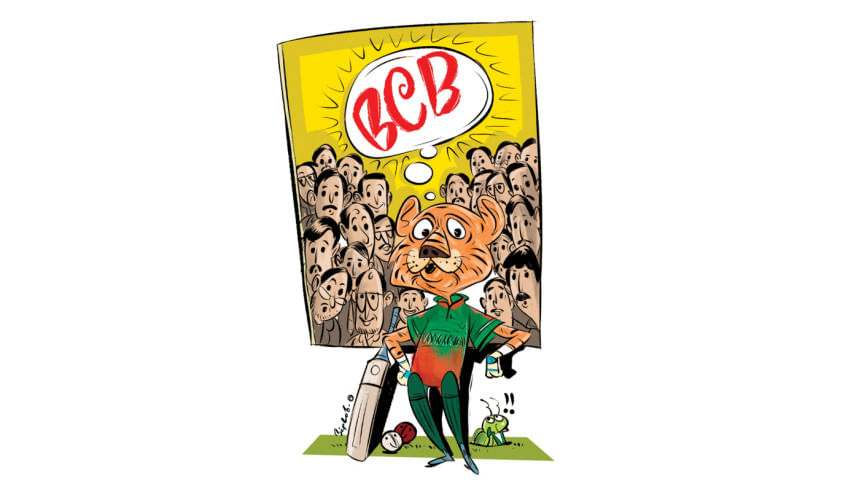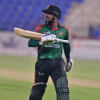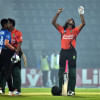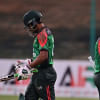Too many cooks for BCB broth?

Ten -- that's how many directors the Bangladesh Cricket Board (BCB) had when Faruque Ahmed took over as its president in last year's August.
Just days earlier, the Awami League government had fallen in the face of an uprising, and several directors resigned from the board in the new political reality.
Time and again, Faruque spoke about the difficulties of running the board with only two fifth of the usual 25 directors.
Ironically, however, even with only 40 percent of the board intact, the BCB under him still had more people in policymaking roles than the boards in Sri Lanka, New Zealand, Afghanistan and even the cricketing powerhouse India.
BCCI+ECB+CA ≈ BCB
Faruque was eventually ousted from the board but made a dramatic comeback in the latest BCB polls, which took place on October 6, and is now one of the two vice-presidents of the newly elected board president Aminul Islam Bulbul.
Bulbul does not have to deal with a depleted board like Faruque, as 23 directors were elected in the latest polls. The National Sports Council (NSC) nominated the remaining two directors, and although there is some controversy over one of them – Ishfaq Ahsan – he is expected to be replaced soon.
With 25 members, Bulbul heads the largest board of directors among all Test-playing nations—more than twice the size of most, and in some cases, more than thrice.
The world's richest cricket board, the Board of Control for Cricket in India (BCCI), operates with just eight members. Cricket Australia (CA) has 10 directors while England and Wales Cricket Board (ECB) has 11 -- two of whom are full-time salaried officials, the CEO and CFO. Excluding them, there are only nine in leadership roles.
All in all, the so-called big three in cricket combined have 27 policymakers, just two more than Bangladesh.
New Zealand Cricket (NZC) operates with eight board members; Cricket South Africa (CSA) has 13, excluding two executives. Cricket West Indies (CWI), which represents multiple nations, is run by a group of 10.
Even the Pakistan Cricket Board (PCB) and Sri Lanka Cricket (SLC), boards that are often in the news for political reasons like the BCB, have 11 and seven directors respectively.
Zimbabwe Cricket (ZC) has 12, Cricket Ireland (CI) 14, and Afghanistan Cricket Board (ACB) eight.
An all boy's club, almost
Throughout BCB's history, women's representation in policymaking has never been a real priority.
There has been only one female director in its history--former women's cricketer Monowara Anis Minu, who served during the 2007–08 term.
There are talks that the current board might include one woman as the NSC might nominate a woman to replace Ishfaq.
In contrast, major cricketing nations have significant female representation. NZC leads the way: both its presidency and executive chair is held by women, and five of its eight directors are also women. South African and Irish boards also have a female president.
Five out of nine ECB directors are women. CA has three female directors and the Australian government has mandated that national and state sporting bodies must achieve a 50-50 gender split on their boards by mid-2027
In BCCI, one of the two representatives from the Indian Cricketers' Association must be a woman.
No transparency in financial benefits
In most major cricket boards, the financial benefits and honorariums of elected or appointed directors are not a secret. For instance, Australia's directors receive annual honorariums, and the exact amounts are publicly available. Salaries of paid executives such as CEOs and CFOs are also listed on their websites.
Although the BCCI's policymakers are honorary, their benefits and entitlements are clearly defined and transparent.
That's not the case in the BCB. According to the constitution, directors are not salaried, yet some even leave their jobs to take up this unpaid position.
In the latest polls, one former national team cricketer, who had been a selector earning a handsome honorarium, resigned to become a director without pay.
Much ado, little done
The BCB outnumbers all major boards in the number of policymakers, but that has hardly translated into on-field success.
Take the men's national team for example: ranked 9th in Tests, 10th in ODIs, and 9th in T20Is, despite being the central focus of the board.
The BCB could not arrange international matches for the women's team for almost five months before sending them off for the ongoing ICC Women's World Cup.
Domestic cricket has been on the decline for years, the Bangladesh Premier League has been marred with allegations of corruptions, the game's decentralisation remains a pipe dream, and cricketers everywhere are crying out for more facilities.
Too many cooks in the kitchen?
Soon after getting elected as president, Bulbul, half-jokingly, said that they were overwhelmed with work and that things would be easier if a day had 33 hours instead of 24.
The reality is that even with 24-hour days and fewer than half of the policymakers, world's leading cricket boards are operating much more efficiently.
So, the question is: does BCB really need such a large board?
"I don't think such a large board is necessary," former BCB general secretary Syed Ashraful Haque, who worked as CEO of the Asian Cricket Council (ACC), told The Daily Star.
"The board of directors should only decide the direction of cricket -- the professionals are supposed to execute those decisions. In every other country, boards are small… Why BCB needs 25 directors, I don't know. I think that's too many."

 For all latest news, follow The Daily Star's Google News channel.
For all latest news, follow The Daily Star's Google News channel. 











Comments